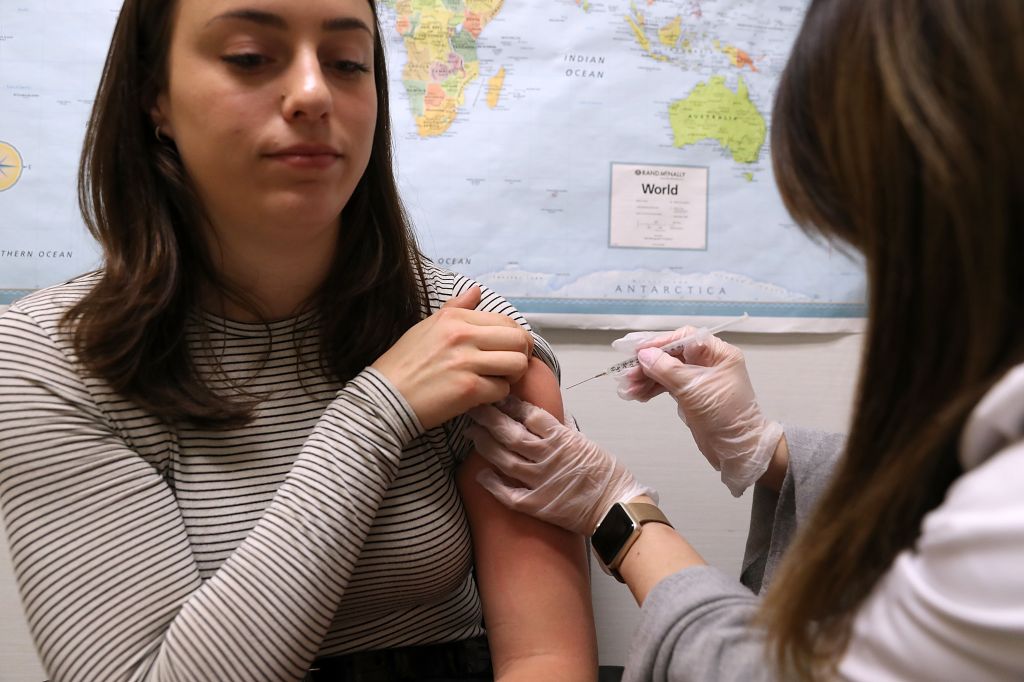
Source: Justin Sullivan / Getty
WASHINGTON, Feb. 2, 2018 /PRNewswire-USNewswire/ — As flu activity reaches its highest levels in nearly a decade, it is important to take steps to prevent getting or spreading the illness. These include recognizing the signs and symptoms, and knowing when to go to the emergency department or seek care from another medical professional.
“This is a particularly dangerous flu season, and your first line of prevention is to take appropriate precautions including washing your hands and avoiding direct contact with ill people,” said Paul Kivela, MD, MBA, FACEP, president of ACEP. “The most vulnerable patients are children, baby boomers aged 50 to 64, seniors, pregnant women and those with chronic conditions. Even though the flu shot is less effective this year, it still can reduce your risk of getting the flu and having serious complications.”
The flu shot is recommended for anyone over the age of 6 months, including pregnant women. You can avoid spreading germs by washing your hands, covering your mouth when you cough and staying home from work, school or other activities if you are not well.
“Most people with flu typically do not require emergency care, but this season’s disease strain is much more active than previous years. Public health experts project that tens of thousands of people could suffer flu-related deaths. If you have emergency warning signs or complications, go to the nearest emergency department immediately,” said Dr. Kivela.
In addition, Dr. Kivela said that emergency physicians seeing are increased cases of patients with irregular heart rhythms and heart attacks during or in the days after someone had the flu. Some people are also developing swelling in mouth or neck, which could be serious.
Cases have been reported in 49 states for weeks and more than 6 percent of all patients at clinics and emergency departments are there because they are showing flu-like symptoms, the Centers for Disease Control and Prevention (CDC) reports.
If you have a non-emergency illness, first seek help with your primary care physician or urgent care. Common flu symptoms include fever/chills, cough, sore throat, runny nose, headache or body ache, fatigue or vomiting/diarrhea. If you have any emergency warning signs of flu, or flu-related complications, please go to the nearest ER immediately.
CDC identifies these flu emergency warning signs:
For adults:
Difficulty breathing or shortness of breath
Chest pain or abdominal pain
Sudden dizziness
Confusion
Severe or persistent vomiting
Flu-like symptoms that improve but then return with fever and worse cough
Swelling in the mouth or throat
Weakness
For children:
Fast breathing or trouble breathing
Bluish skin color
Not drinking enough fluids
Not waking up or not interacting
Being so irritable that the child does not want to be held
Flu-like symptoms improve but then return with fever and worse cough
Fever with a rash
In addition to the signs above, seek medical attention for an infant who shows any of these signs:
Not able to eat
Trouble breathing
No tears when crying
Significantly fewer wet diapers than normal
“If you have these warning signs, you should seek emergency care, even if your health insurance company tells you not to,” said Dr. Kivela.
Courtesy of www.thebellereport.com















